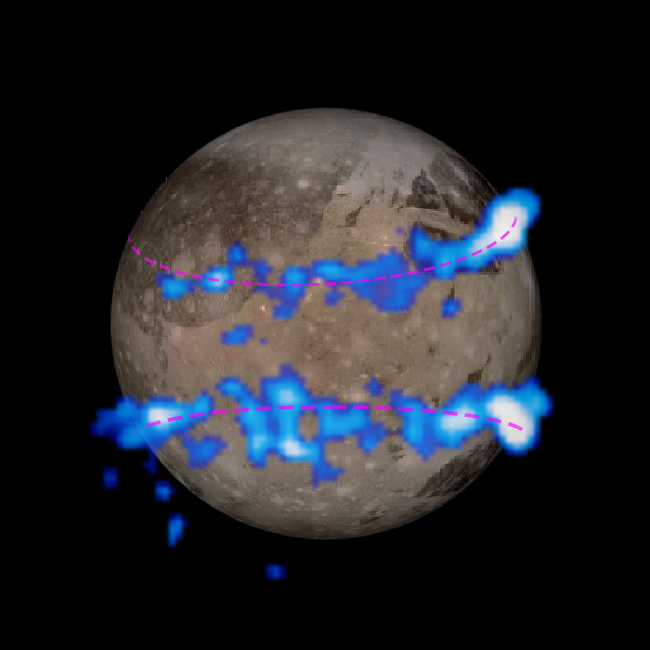An artist's concept of Ganymede orbiting the giant planet, Jupiter. Image via NASA/ESA
Only a day after the discovery of the first warm ocean in the solar system on Enceladus, NASA’s Hubble Space Telescope has discovered Jupiter’s largest moon, Ganymede, also has a vast ocean, bigger than any on Earth.
While the ocean may not be hydrothermal like the one found on Enceladus, this discovery suggests that Jupiter’s, and the solar system’s, largest moon harbours beneath its surface an enormous saltwater ocean a number of times larger than all of Earth’s combined.
From the researchers’ calculations, Ganymede’s ocean is about 100km deep – 10 times deeper than any of Earth’s oceans – and is buried beneath an icy crust almost 150km thick.
The discovery of this enormous ocean was made due to Ganymede’s unique status as the only moon in the solar system with its own magnetic field and poles which are heavily influenced by its much larger parent, Jupiter, which results in Ganymede’s field being tied to the larger field.

NASA Hubble Space Telescope images of Ganymede’s auroral belts (coloured blue in this illustration) overlaid on a Galileo orbiter image of the moon. Image via NASA/ESA
By measuring that the rocking of the moon which moved its axis by no more than two degrees, the researchers were able to determine that a saltwater ocean must be the force preventing Jupiter’s larger magnetic field from having the expected six degrees tilt in an oceanless moon.
Despite the Hubble Space Telescope being more commonly used to look into the furthest reaches of space, the team of researchers from the University of Cologne who made the discovery felt that the telescope could be used for objects much closer to home.
I was always brainstorming how we could use a telescope in other ways,” said lead researcher Joachim Saur. “Is there a way you could use a telescope to look inside a planetary body? Then I thought, the aurorae! Because aurorae are controlled by the magnetic field, if you observe the aurorae in an appropriate way, you learn something about the magnetic field. If you know the magnetic field, then you know something about the moon’s interior.”
To put the amount of water on other moons in the solar system into perspective, here is a gif showing the equivalent amount of water on Europa as on Earth.

Gif via 5hoursahead/Reddit